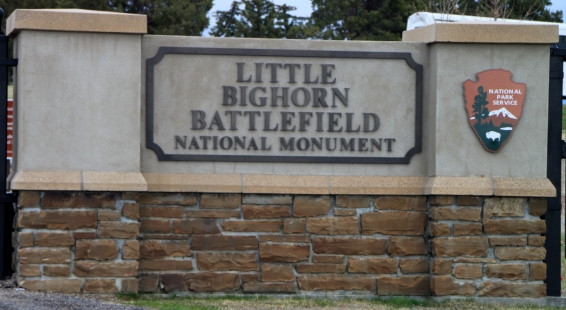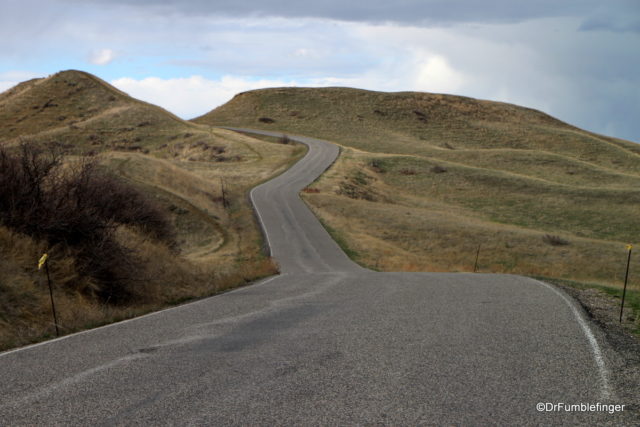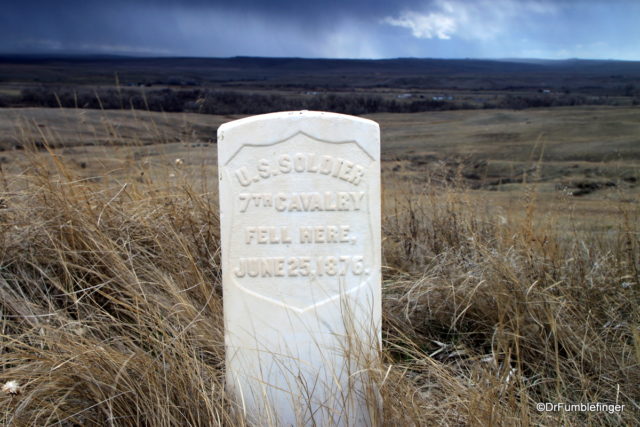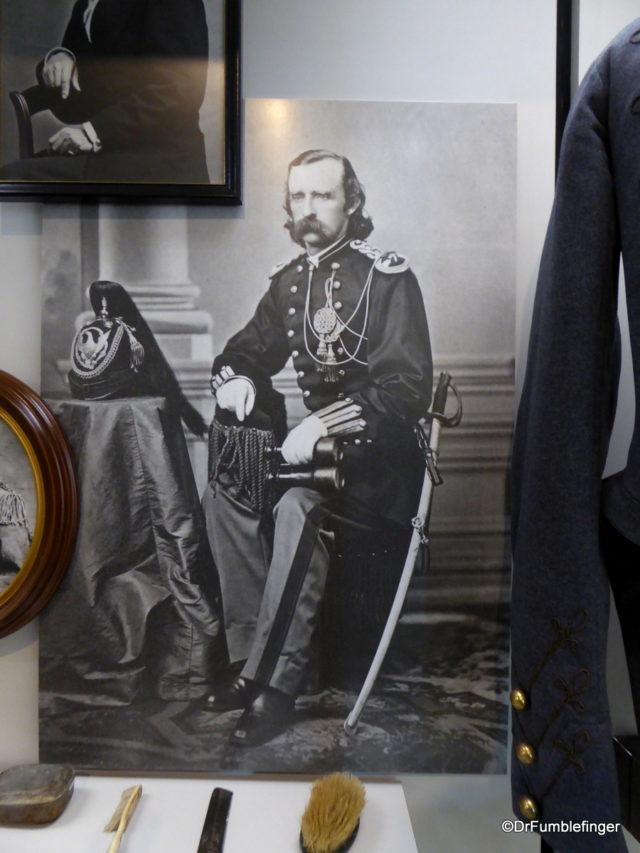
My most recent visit was my third to the Little Bighorn Battlefield National Monument, which preserves the site of “Custer’s Last Stand” — the Battle of the Little Bighorn (June 25 and 26, 1876). The National Monument has a small museum but the highlight of your visit will be to drive through or walk across part of the battlefield. There are grave markers where soldiers fell during the battle, the largest cluster on the hill where General Custer died, as well as a few more recent markers for some of the Cheyenne warriors who were killed during the fighting.
You’ll enjoy the spectacular scenery of the Little Bighorn valley and “Big Sky” country of Montana. Every time I’ve visited storm clouds drifted by, adding to the drama of the setting. The Battle of the Little Bighorn was fought on ridges and bluffs of the country you see around here.

Little Bighorn Battlefield National Monument
To summarize, the Little Bighorn Battlefield NM is a memorial to those who fought in the battle: George Armstrong Custer’s 7th Cavalry versus a combined force of Northern Plains Indians (Lakota-Northern Cheyenne and Arapaho).
A Brief History of the Battle:
In spring of 1876 the US government launched a campaign against those Sioux and Cheyenne Indians who refused to live within the boundaries of the Great Sioux Reservation in South Dakota, the goal being to return them to the reservation. The history of the tensions and conflict which had evolved to that point is long and complicated and beyond the scope of this blog, but suffice it to say that it climaxed with the Battle of the Little Bighorn. The interested reader is directed to the NPS website for more historic background and details.

Little Bighorn Battlefield National Monument
Even though he lead trained soldiers against the tribes camped at the Valley of the Little Bighorn, the odds were against Custer whose 600 soldiers were to fight an army of several thousand warriors. Custer made a significant error in splitting his men into several different groups (lead by Capts. Reno and Benteen), designed to attack different aspects of Native encampments. It all ended quite badly, especially for Custer, whose command was found dead and mutilated on a ridge east of the Little Bighorn at the site of “Custer’s Last Stand”, where today you find a monument and dozens of markers.

Soldier’s graves, General Custer’s with the black marker. Little Bighorn Battlefield National Monument
The many markers found around the battlefield represent spots where people died — both US soldiers and tribal warriors….and add a human element to the National Monument.
The death of Custer and hundreds of US soldiers, while a victory for the Lakota and Cheyenne, rallied the US government to increase their efforts to force tribes onto the reservations. In time, with sheer force of numbers, the Plain Indians uprising was overwhelmed and most surrendered, moving to the reservation.
The Little Bighorn Battlefield has a small but interesting museum and bookstore, where you can see helpful videos and displays outlining the sequence of events which lead to the battle, our understanding of how the battle unfolded, and the sequelae of the conflict.

Custer memorabilia, Little Bighorn Battlefield National Monument
There are some interesting exhibits, including a significant display of materials that belonged to once belonged to and were used by George Custer. Part of the National Monument is the Custer National Cemetery, a cemetery for US war veterans like so many others across the country.
I can see where this destination might not appeal to everyone, but I am always moved by the beauty of the place and the loss of life on both sides of the battle — emphasized by the many tombstones scattered over these hills.
(Click on thumbnails to enlarge, right arrow to advance slideshow)